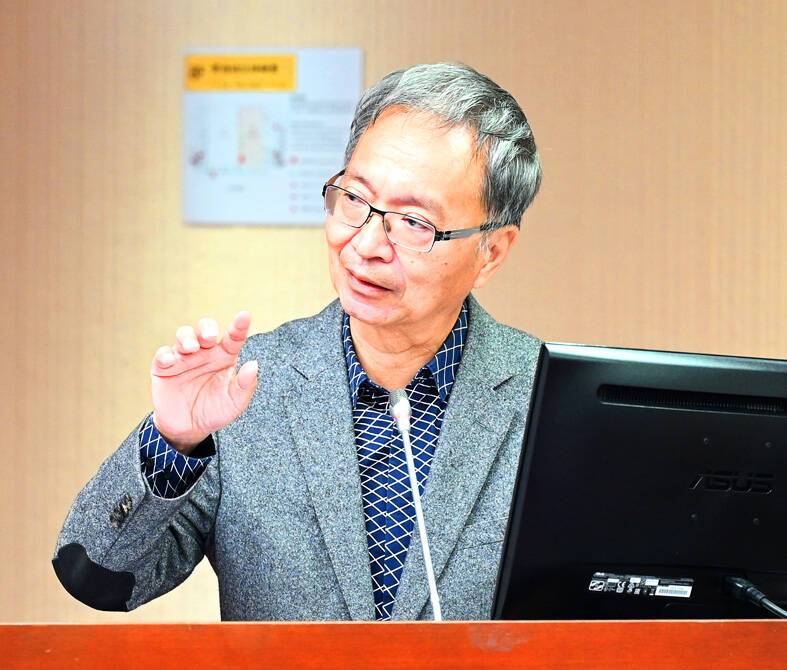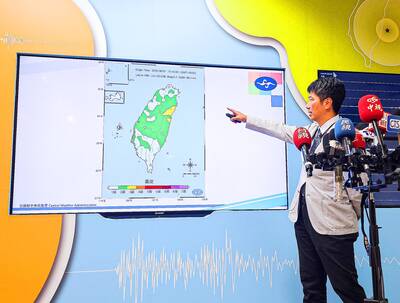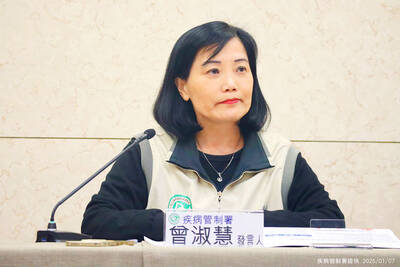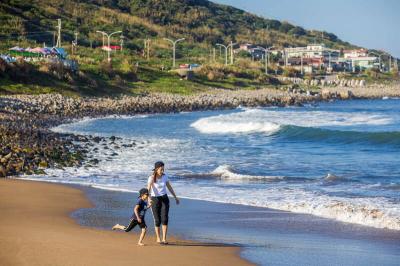Minister of Health and Welfare Hsueh Jui-yuan (薛瑞元) yesterday said that all 35 types of food ingredients collected at a restaurant in Taipei, where a deadly bongkrek acid poisoning outbreak occurred last week, tested negative for the toxin, so how the toxin was produced is still unknown and under investigation.
Bongkrek acid is a deadly toxin produced by the bacterium Burkholderia gladioli pathovar cocovenenans, particularly in fermented coconut or corn products.
The Centers for Disease Control (CDC) as of 5:30pm yesterday said that the number of people who reported feeling ill after eating at Polam Kopitiam’s (寶林茶室) branches in Taipei, between March 19 and March 24, remained at 31.

Photo: Wang Yi-sung, Taipei Times
However, as two people who ate at another branch in Raohe Night Market (饒河夜市) tested negative for bongkrek acid, and an analysis showed that they are not linked to the food poisoning outbreak at the restaurant in Taipei’s Far Eastern Department Store Xinyi A13, they would be excluded from the list, the CDC said.
Of the remaining 29 cases, two people have died, five are hospitalized in intensive care units, three in general wards and 21 had returned home, it said, adding that so far a total of 14 people tested positive for bongkrek acid in their blood samples.
Reporting at the Legislative Yuan, Hsueh yesterday said all 35 types of food ingredients collected at the restaurant in Xinyi A13 tested negative for bongkrek acid, but the food samples were collected on March 26, so it could be that the batch of contaminated ingredients was used up and not tested.
As most of the patients ate char kway teow (炒粿條) — a stir-fried flat rice noodle dish — at the restaurant in Xinyi A13, Deputy Minister of Health and Welfare Victor Wang (王必勝) has repeatedly said that he believes the batch of flat rice noodles used in those few days most likely caused the food poisoning outbreak, but his statement was questioned by some Chinese Nationalist Party (KMT) legislators.
Asked for comment, Hsueh said that “from the evidence gathered so far, we can scientifically say that flat rice noodles are the most likely souce, but whether the toxin was produced during the process of flat rice noodle preservation, seasoning or cooking is still being investigated.”
Separately, Wang yesterday said in a radio interview that there are three main conditions for bongkrek acid production: the existence of B. cocovenenans, which has not been recorded in Taiwan; second, the medium that the bacterium is cultured on, particularly starchy foods and coconut; and third, it is produced in warm environments between 22°C and 33°C with a neutral pH, and dependent on the food being fermented.
The three conditions all need to be met to produce bongkrek acid, so cases are very rare, he said, adding that while flat rice noodles should be made of rice, the supplier of the flat rice noodles used by the restaurant mixed corn starch and tapioca starch with rice powder to make the noodles.
Wang said the restaurant in Xinyi A13 has starch and a warm temperature environment, so the B. cocovenenans could have been brought in from other countries, as there are many international travelers, but it takes about two weeks for bacteria cultivation on the specimen collected in the restaurant environment to confirm whether B. cocovenenans was present.
In addition, the Taipei Department of Health said its inspection of 37 vendors at the food courts of two department stores — Breeze Nanjing (微風南京店) and Sogo Department Store’s Tianmu branch — on Sunday resulted in 17 vendors having environment hygiene flaws, including one with expired condiments, and several failing to update mandatory registration or provide necessary documents.

Aftershocks from a magnitude 6.2 earthquake that struck off Yilan County at 3:45pm yesterday could reach a magnitude of 5 to 5.5, the Central Weather Administration (CWA) said. Seismological Center technical officer Chiu Chun-ta (邱俊達) told a news conference that the epicenter of the temblor was more than 100km from Taiwan. Although predicted to measure between magnitude 5 and 5.5, the aftershocks would reach an intensity of 1 on Taiwan’s 7-tier scale, which gauges the actual effect of an earthquake, he said. The earthquake lasted longer in Taipei because the city is in a basin, he said. The quake’s epicenter was about 128.9km east-southeast

The Taipei Summer Festival is to begin tomorrow at Dadaocheng Wharf (大稻埕), featuring four themed firework shows and five live music performances throughout the month, the Taipei Department of Information and Tourism said today. The festival in the city’s Datong District (大同) is to run until Aug. 30, holding firework displays on Wednesdays and the final Saturday of the event. The first show is scheduled for tomorrow, followed by Aug. 13, 20 and 30. To celebrate the 30th anniversary of Disney Pixar's movie Toy Story, the festival has partnered with Walt Disney Co (Taiwan) to host a special themed area on

BE CAREFUL: The virus rarely causes severe illness or death, but newborns, older people and those with medical conditions are at risk of more severe illness As more than 7,000 cases of chikungunya fever have been reported in China’s Guangdong Province this year, including 2,892 new cases last week, the Centers for Disease Control (CDC) yesterday said it is monitoring the situation and considering raising the travel notice level, which might be announced today. The CDC issued a level 1 travel notice, or “watch,” for Guangdong Province on July 22, citing an outbreak in Foshan, a manufacturing hub in the south of the province, that was reported early last month. Between July 27 and Saturday, the province reported 2,892 new cases of chikungunya, reaching a total of 7,716

The New Taipei City Government today warned about the often-overlooked dangers of playing in water, and recommended safe swimming destinations to cool off from the summer heat. The following locations in the city as safe and fun for those looking to enjoy the water: Chienshuiwan (淺水灣), Baishawan (白沙灣), Jhongjiao Bay (中角灣), Fulong Beach Resort (福隆海水浴場) and Sansia District’s (三峽) Dabao River (大豹溪), New Taipei City Tourism and Travel Department Director-General Yang Tsung-min (楊宗珉) said. Outdoor bodies of water have variables outside of human control, such as changing currents, differing elevations and environmental hazards, all of which can lead to accidents, Yang said. Sudden